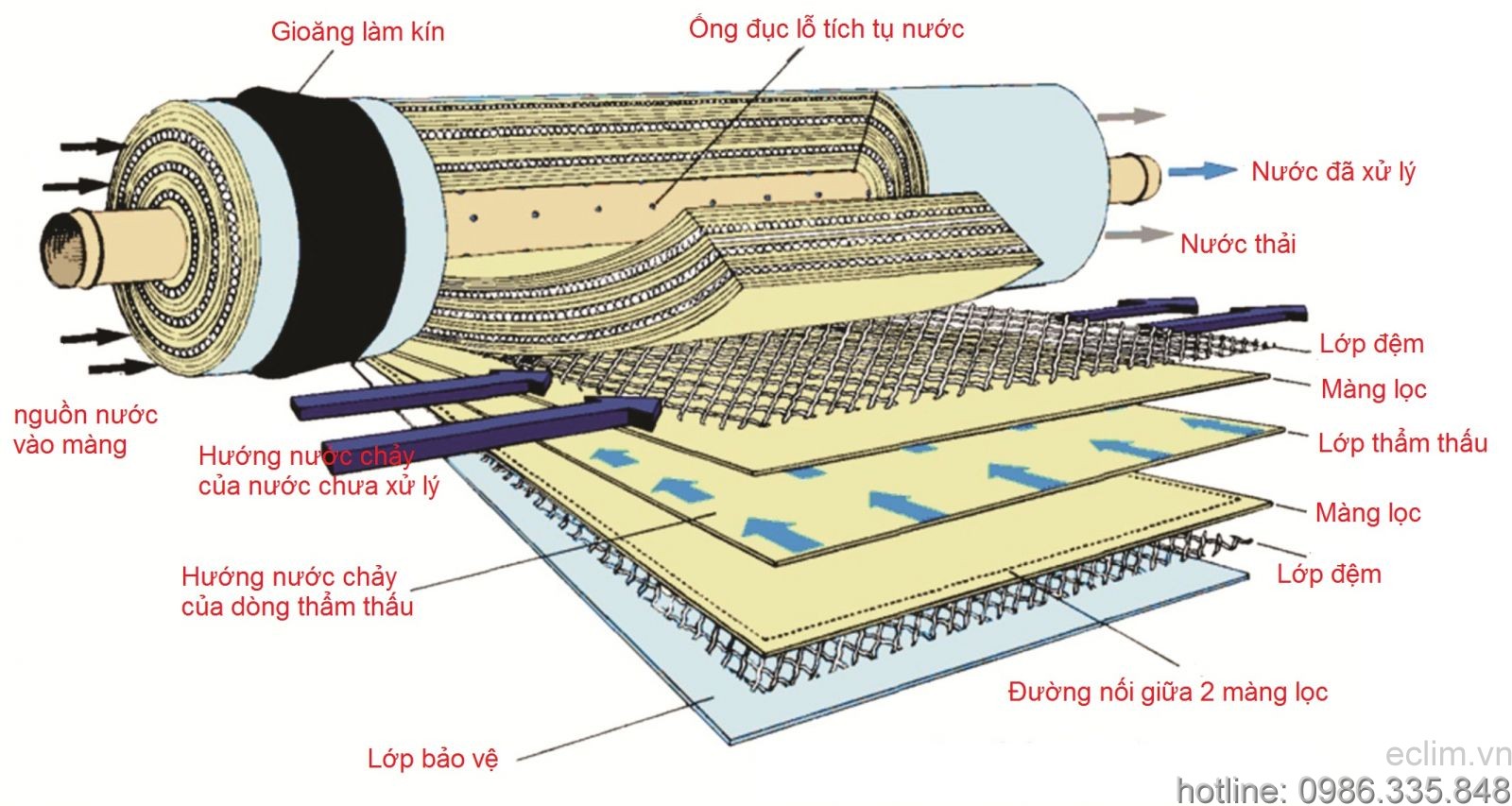1. Synopsiss
RO stands for Reverse Osmosis, which means reverse filtration or reverse osmosis (A process in which a membrane acts as a molecular sieve to remove up to 99% of the solids. microbes, small molecules and organic compounds of molecular weights greater than 300 microns or particles of 0.001 microns in size.
Reverse osmosis is the opposite of flow in nature. In the pure water purification system, separate the pure water from the mineral water or other contaminated water. In a pure water purifier, osmosis water in its own flow, clean water separates from the mineral water and penetrates into the membrane under high pressure. Through this process, we will obtain pure water from the original polluted water.
2. Structure
RO membranes are made of polyamide material. The RO membrane construction consists of several thin layers or film plates that are tightly wrapped together in a helical shape around a plastic tube, which consists of a a clean water conduit, a reverse osmosis membrane and an upstream water conduit.
3. Operational principles
Water will flow into one end of the filter, the materials in the membrane have a semi-permeable membrane, allowing the water molecules to pass through and retain other dissolved minerals. When the water supply pressure is greater than the surface pressure of the membranes and is maintained continuously, the water molecules will penetrate horizontally along the membrane surface around the helical surface, where the water is filtered by RO membranes will be led into clean water pipes, while other solutes will flow through the wastewater membrane and flow to the other end of the filter and self-wash the surface of the membrane. Remove pollutants by discharge.
4. Advantages
– Remove up to 99% of bacteria, absolutely safe to drink without any other steps.
– Eliminate almost all of the hazardous substances and chemicals present in groundwater, river water, and contaminated water treatment processes.
– Remove all chlorine-producing products (All chlorine-producing products are proven to be carcinogenic) when chlorine is used for the purpose of disinfection in water treatment.
– Used in water purification equipment for the preparation of injection, oral medications, drug-specific, wound care, dialysis.
– Used to filter seawater into fresh water.
5. Disadvantages
Pure water from RO filtration technology usually does not retain mineral minerals good natural minerals such as calcium, magnesia … use pure water long healthy.
– Need large water pressure to push through the RO membrane, so it must use electricity, sometimes causing short circuit, power consumption and unsafe for the user.
– Waste water: waste water and not environmentally friendly
+ RO technology also has difficulty in processing lime scale sludge.
6. Scope of use
– Producing bottled pure water
Re-use (recycle) the astronaut’s excursion into drinking water on space stations
– In the medical: preparation of injection, oral medication, drug-specific, medical device wash, wound cleaning.
– Hemodialysis
– Filter fresh water into fresh water.



